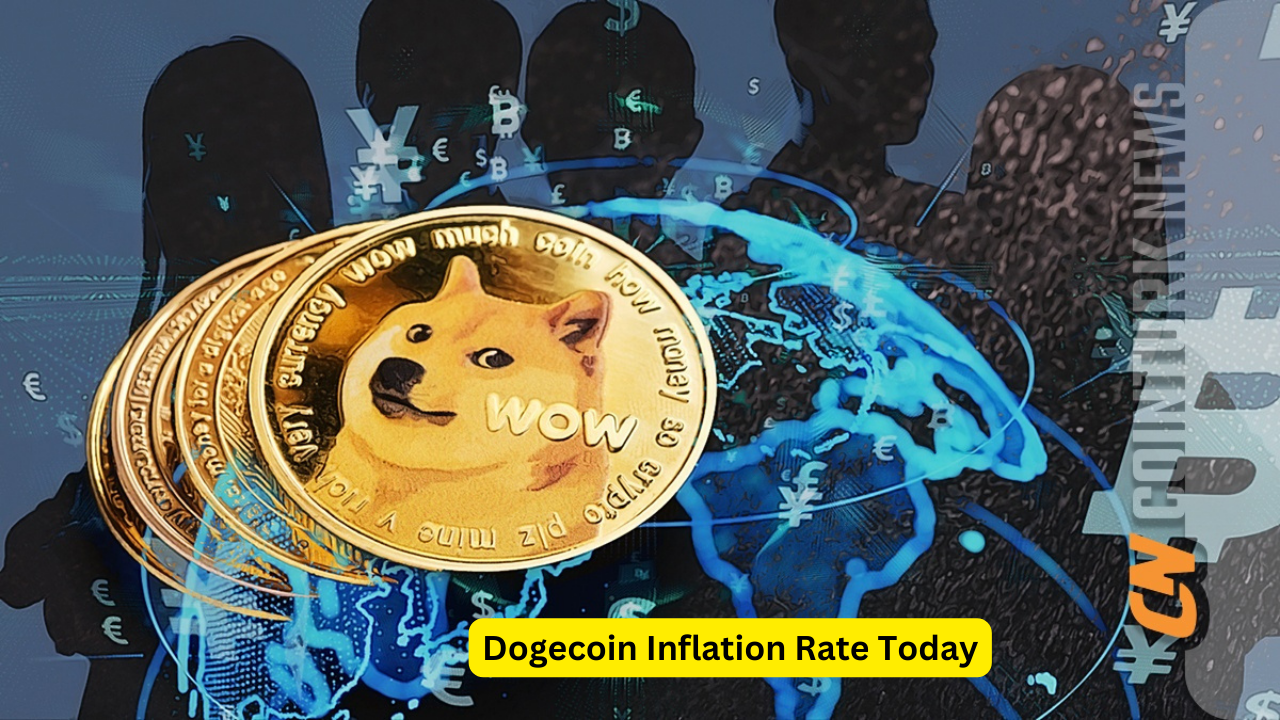Dogecoin, initially created as a joke cryptocurrency, has grown into a significant player in the digital currency market. Known for its Shiba Inu mascot and community-driven development, Dogecoin has attracted a diverse following, including high-profile endorsements and widespread media coverage. A critical aspect of understanding Dogecoin’s value and potential is its inflation rate. This article provides a comprehensive analysis of the Dogecoin inflation rate today, examining its causes, effects, and implications for investors and the broader cryptocurrency market.
What is Dogecoin’s Inflation Rate?
Inflation in the context of cryptocurrency refers to the rate at which new coins are created and added to the circulating supply. For Dogecoin, this rate is particularly important because, unlike Bitcoin, it does not have a capped supply. This means that Dogecoin is an inflationary cryptocurrency, with new coins being minted indefinitely.
Dogecoin’s Inflation Mechanism
Dogecoin’s inflation is built into its protocol. The key aspects of this mechanism include:
- Block Rewards: Miners receive a fixed reward for every block they successfully mine. Currently, the block reward is 10,000 DOGE, and a new block is added approximately every minute.
- Unlimited Supply: Unlike Bitcoin, which has a maximum supply of 21 million coins, Dogecoin does not have a supply cap. This means new Dogecoins will continue to be minted indefinitely.
Current Inflation Rate
As of today, Dogecoin’s inflation rate can be calculated based on the block reward and the rate at which new blocks are created. With 10,000 DOGE per block and a block time of one minute, approximately 5.256 billion DOGE are added to the supply each year. Given the current circulating supply of around 140 billion DOGE, the annual inflation rate is about 3.75%.
Implications of Dogecoin’s Inflation Rate
Impact on Value
One of the primary concerns for investors is how Dogecoin’s inflation rate affects its value. Inflation can have both positive and negative implications:
- Negative Impact: Continuous minting of new coins can lead to dilution, where the value of each individual coin decreases as the supply increases. This can exert downward pressure on the price if demand does not keep pace with supply.
- Positive Impact: On the other hand, the predictable and consistent inflation rate can provide stability, making Dogecoin a reliable medium for transactions. Additionally, as long as demand for Dogecoin grows or remains steady, the inflation rate can be absorbed without significant depreciation in value.
Usability and Adoption
Dogecoin’s inflationary nature can be seen as a feature rather than a bug. Unlike deflationary cryptocurrencies like Bitcoin, where hoarding can reduce liquidity, Dogecoin’s continuous supply encourages spending and circulation. This makes it a practical choice for tipping, microtransactions, and charitable donations.
Community and Culture
Dogecoin’s inflation is aligned with its community-driven ethos. The currency was designed to be accessible and fun, with a focus on widespread use rather than serving as a store of value. The community’s emphasis on tipping and donations aligns well with an inflationary model, promoting active usage and engagement.
Comparing Dogecoin’s Inflation to Other Cryptocurrencies
To understand Dogecoin’s inflation rate in context, it’s useful to compare it to other major cryptocurrencies:
- Bitcoin: Bitcoin’s inflation rate decreases over time due to its halving events, where the block reward is halved approximately every four years. With a capped supply of 21 million coins, Bitcoin is deflationary in nature.
- Ethereum: Ethereum currently has an inflationary supply model, but its annual inflation rate is lower than Dogecoin’s. Upcoming changes with Ethereum 2.0 aim to reduce the issuance rate further.
- Litecoin: Like Bitcoin, Litecoin has a capped supply (84 million coins) and a halving mechanism, making it a deflationary cryptocurrency.
Future Outlook for Dogecoin
Sustainability and Development
Dogecoin’s future largely depends on its community and ongoing development. The Dogecoin Foundation, along with various developers, continues to work on enhancing the network’s functionality and security. Ensuring that Dogecoin remains relevant and useful in a rapidly evolving cryptocurrency landscape is crucial.
Market Dynamics
The broader cryptocurrency market’s dynamics also play a significant role in Dogecoin’s trajectory. Factors such as regulatory developments, technological advancements, and macroeconomic conditions can influence investor sentiment and demand for Dogecoin.
Community and Culture
The Dogecoin community’s unique culture of inclusivity, humor, and generosity will continue to be a driving force behind its adoption and use. As long as the community remains active and engaged, Dogecoin’s relevance and appeal are likely to endure.
Conclusion: Dogecoin’s Inflation
Understanding the Dogecoin inflation rate today is essential for anyone involved in the cryptocurrency market. While the continuous creation of new coins can pose challenges, it also aligns with Dogecoin’s goals of accessibility, usability, and community engagement. For investors and users alike, recognizing the implications of Dogecoin’s inflationary model is key to making informed decisions.
